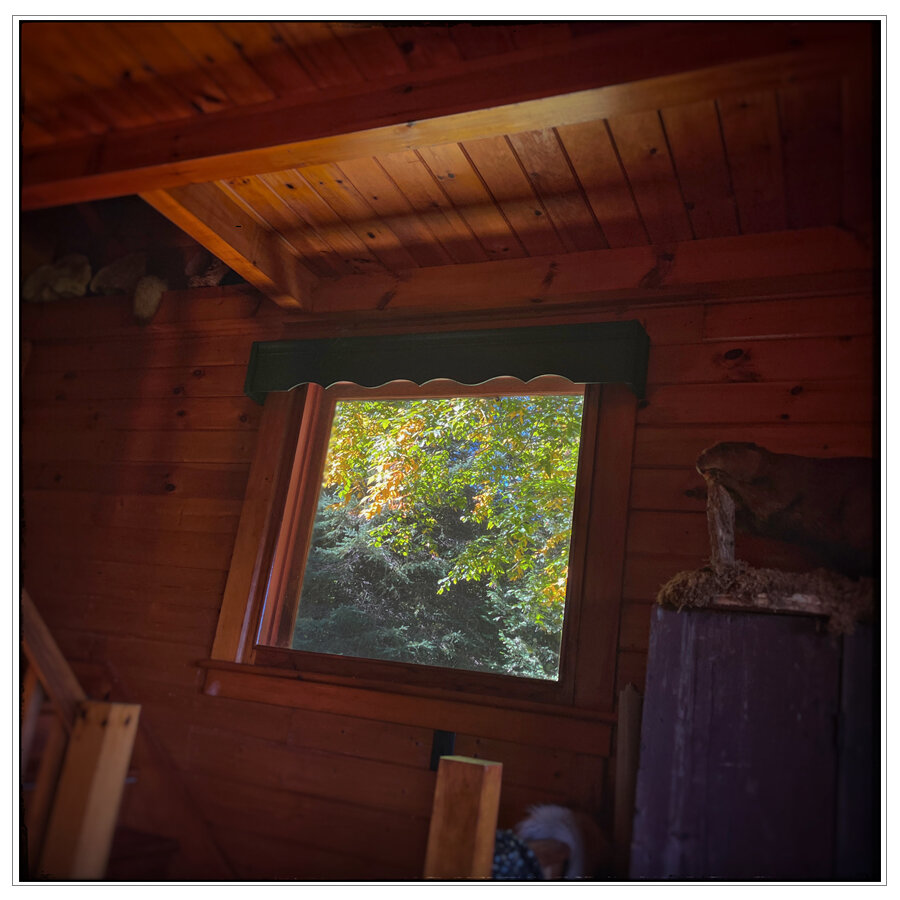HERE IN THE ADIRONDACKS SPRING HAS SPRUNG all over the place with great vigor . Yesterday’s high was 80 degrees with bright sun and blue skies. So, the wife and I, together with a good friend, headed out for a circuitous-down to the central Adirondacks and back-200 mile drive, ostensibly to pick up 3 cases of wine for our daughter’s wedding this coming weekend.
Along the way we sought out 3 raging, thunderous spring-melt falls and had a late lunch in Chef Darrell’s diner-his mouth-watering meatloaf for me-in Blue Mountain Lake. Naturally, I made some pictures along the way.
Today, while I was processing those pictures, I was thinking about the idea of “composition”. FYI, that’s a word that rarely enters my vocabulary in describing how I “arrange” things in the making of my pictures. Thinking about it, I believe that my deliberate disdain for that word and the picture making conventions it represents originates from my participation-as an consultant (my name is in the book’s acknowledgements) about the medium and it conventions-with Sally Eauclaire in her preparation for her landmark book, the new color photography.
Sally, to whom 100s of photographers submitted work, would, on a regular basis, bring work to my studio where we would spread it out on the studio floor. Then she and I would walk round the spread and she would asked me questions about various pictures. Questions along the lines of “how did the photographer achieve that look / result / effect?” She was not soliciting my aesthetic opinion. Rather, she had absolutely no experience, re: the medium and its apparatus.
In any event, one of the prominent things I took away from that experience was that, in the viewing of all that work from all of later considered masters of modern fine art color photography, I saw nothing in the photographs that evidenced any notion of conventional photographic composition. None. Nada. Not even a hint.
While those early color photographers were credited with many ground-breaking accomplishments, iMo, except for the traditional photo press / media who piled on declaring the work to be a “put-on…worse than amateur snapshots…these photographers can not be serious” and the like, little attention was paid to their notions, re: composition. It took someone-Sally Eauclaire-who was not bound by knowledge of conventional photographic composition technique to look at photographs from the perspective of the Fine Art World with its emphasis on the traditional elements of Art; line, shape, space, color, value, form.
In effect, those photographers stated, via their work, that composition, as it was formally recognized, was an aesthetic dead end. (you can quote me on that)
All of that written, I have written a mashup of my words together with words and phrases-borrowed from Eauclaire’s book-that reflect my notion of “composition”:
iMo, the best photographs are those made by photographers who perceive real objects and intervening spaces as interanimating segments of a total visual presentation; a discernment from which they create a delicately adjusted equilibrium in which a segment of the real world is co-opted for its visual possibilities, yet delineated with the utmost specificity. Their images, in printed form, exist simultaneously on a continuous 2-dimensional visual plane on which every space and object are interlocking pieces of a carefully constructed jigsaw puzzle and a portal through which a viewer can discern navigable space and recognizable subject matter.
Although, if I were to eschew all the art-speak, I suppose I could just quote Edward Weston:
“Now to consult the rules of composition before making a picture is a little like consulting the law of gravitation before going for a walk….Good composition is merely the strongest way of seeing.”
However, which ever way you wish to read / hear it, suffice it to write that there are no “rules” for good composition.




